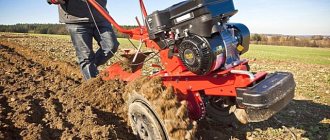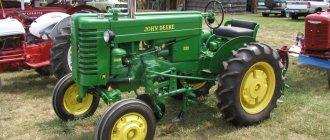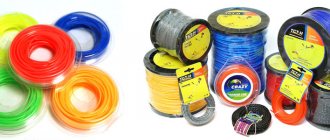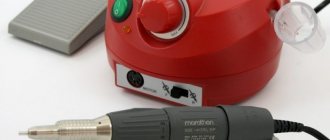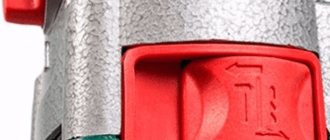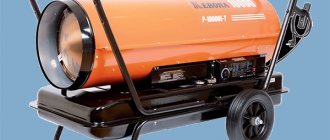A modern summer resident often faces a problem: how to quickly and efficiently cultivate a plot of land. We recommend choosing a walk-behind tractor or cultivator for this. They are ideal for a large vegetable garden, and the set of attachments makes them indispensable on the farm.
- Why is it necessary to till the soil?
- What is the difference between cultivation and plowing
- What types of walk-behind tractors are there?
- What engines and fuel are used in walk-behind tractors?
- Important technical parameters of walk-behind tractors
- What types of cultivators are there?
- What engines and fuel are used in cultivators
- Important technical parameters of cultivators
- What additional attachments are used?
Why is it necessary to till the soil?
There are several reasons to plow and cultivate the land:
Salinity and lack of oxygen
The upper layer of the earth dries out, and in the deeper layers moisture is retained and salt is deposited. Productivity depends on this. If the top layer is loosened and turned over, the soil receives oxygen. It is necessary for important microorganisms.
Weeds and pests
After plowing, the weed roots die in the sun or die from damage.
Soil erosion or excessive compaction
Wind erosion blows away the fertile part of the land. Soil compaction compresses the pores that should conduct water and air. This prevents root growth.
Previously, summer residents used a shovel or horses for such excavation work. Hand cultivators cope well with tasks in oversized summer cottages with well-groomed soil, small flower beds and beds. On hard ground it is difficult to use hand tools. Not everyone can physically work like this. Therefore, in modern dachas, large gardens and vegetable gardens, walk-behind tractors, cultivators and mini-tractors are used.
Mechanization of manual labor provides many advantages, including saving time, effort and efficient performance of such work as:
- plowing the land;
- cultivation;
- preparing furrows for planting;
- hilling;
- digging up root crops.
What is the difference between cultivation and plowing
If, during plowing of a plot, the earth is turned over in layers, then in the case of cultivation, it is loosened to a certain depth, thereby the fertile layer of soil remains in place.
As the cultivator passes, the top layer of soil loosens and crumbles, resulting in mixing of the soil. Afterwards the area is leveled and visually enlarged. During cultivation, the roots of harmful plants and weeds are also pruned. This is especially necessary after winter, when the pressure of snow and moisture causes the soil to become compacted.
The importance of arable work in the country is complemented by labor intensity. This is physically difficult work, so choosing the right assistant device can greatly facilitate tasks on the land. Thus, 10 acres of land can be cultivated not in 2 days, as by hand, but in 2-3 hours. So what should you buy: a walk-behind tractor or a cultivator?
Which is better, a walk-behind tractor or a cultivator?
What to choose: walk-behind tractor or cultivator?
Having trouble choosing? Let's turn to the main characteristics and principles of operation of these technical means. Both types of equipment are designed to perform the same tasks, such as: cultivation, plowing, creating furrows and cutting ridges, hilling, weed control, planting potatoes, preserving moisture, clearing snow, etc. However, with the same tasks, the conditions are different, and they are characterized by the following factors:
- soil density: sandy, loamy, peat, virgin soil
- area of cultivated area: 5 acres or 5 hectares.
- purpose of the cultivated area: large personal plot, field, vegetable garden, greenhouse, garden, flower bed
- the presence of bushes and trees between the ridges
When choosing a technical tool, you should also be aware of such points as:
- in order to extend the service life of the unit, it makes sense to buy a technical device with some power reserve
- the quality of cultivation depends on the depth of processing
- The speed and complexity of cultivation depend on engine power and processing width.
- if the soil is dense or heavy, it is more convenient to process with removable or collapsible cutters
- factor of the possibility of adjusting the width of the treated surface, because in small areas or in greenhouses, the larger width of the processed part also requires a larger turning radius, which is not always convenient and can reduce the maneuverability of the equipment
- transmission: gear is designed for significant loads and is used in semi- and professional equipment, and transmission of rotation from the engine to the gearbox via a belt or chain is used in lighter models designed for small processing areas
- wheels: as a rule, in motor cultivators, wheels replace movable equipment, which is transported to the front axle
- power take-off shaft: designed for the use of additional attachments, as well as attachments with moving elements (mower, snow blower). If there is no power take-off, then the technical device can only be used as a draft mechanism.
We advise you to study - Gypsum fiber or drywall: which is better, what is the difference and areas of application
It is better to choose a motor cultivator:
- treatment of the upper layers of the soil is required: hilling, loosening, moisture conservation, weeding
- if the processing area is no more than 10 acres
- there is a need to work in confined spaces (greenhouse, greenhouse, flower bed)
- the cultivated soil is not particularly dense (however, if the cultivator has enough power and special cutters are used, the unit is capable of cultivating even virgin soil)
- As a rule, motor cultivators are more compact, maneuverable and lightweight, so people of different age categories and physical characteristics can work with them.
It is better to choose a walk-behind tractor:
- if the processing area is more than 10 acres
- there is no need to work in confined spaces (greenhouse, greenhouse, flower bed) up to 20 acres: recommended power 3-6 hp, processing width - up to 70 cm. over 20 acres: power - 8-13 hp, processing width from 80 cm to 110 cm, depth up to 30 cm.
- The weight of a walk-behind tractor ranges from 70 to 120 kg, so a specialist working with fairly heavy equipment needs to have strong physical training.
- The walk-behind tractor, when using attachments, can be used as a traction device and used as a cargo vehicle.
Qualified employees will approach any order in a friendly and attentive manner, competently advise on the technical features of the chosen model and help, if necessary, make the best purchase choice, taking into account your economic needs and financial capabilities.
Also a nice bonus is that all purchased equipment, at the buyer’s request, is delivered assembled, filled with oil and gasoline.
F-Park team
In accordance with the Copyright Law, this material is permitted for copying and posting on other resources and media only with a link to the source https://f-park.by/
What types of walk-behind tractors are there?
A walk-behind tractor is a simplified version of a mini-tractor. Thanks to the wheel traction, the attachments are set in motion, and the equipment itself is controlled by following it. The walk-behind tractor consists of an engine attached to a two-wheel axle. Two handles are required to control the unit. The gas, clutch and gear shift levers are located on them.
maximal.by
1107 rub.
All stores (1)
Petrol walk-behind tractor Shtenli 900 8hp.
from 1107 rub.
Engine power: 8 hp; fuel tank volume: 6 l; fuel: gasoline; cultivation width: 1200 mm.
Description Where to buy (1)
With the help of a walk-behind tractor, they hill up and plow the soil, mow the grass, harvest crops and perform many other works on their plots. There are several types of walk-behind tractors. Each of them is designed for processing areas of different sizes; they have the appropriate power and dimensions:
- lungs . power up to 5 hp, weight up to 40 kg, plot up to 25 acres;
- average _ power up to 8 hp, weight up to 100 kg, plot from 30-100 acres;
- heavy . power up to 17 hp, weight from 100 kg, plot of more than 100 acres.
To cultivate virgin lands, it is recommended to purchase devices with significant weight, since lighter devices can simply “jump” out of the ground and will require a lot of effort for plowing. To cultivate areas that have already been cultivated several times, it is better to purchase light-class devices, otherwise they will bury themselves in the ground under their own weight.
Medium models are perfect for summer cottages - they can handle all basic arable work. A large number of attachments and additional tools can be attached to heavy walk-behind tractors: hiller, plow, harrow, potato digger or trailer. The walk-behind tractor can be used for transporting goods or clearing snow.
What is the difference between a walk-behind tractor and a walk-behind cultivator? and what is common?
Yatana Kramt
The words “motor-cultivator” and “motor-block” are often confused, but in vain - these machines, although similar in design, and are indispensable assistants when performing agricultural work in the garden, summer cottage, are still not identical. Their main and main difference is that with a motor-cultivator, soil cultivation is the most important and only function, while a walk-behind tractor is a universal unit that can be used for various jobs and is capable of using special trailed or mounted implements. All walk-behind tractors and motor-cultivators are equipped with cultivator cutters, with the help of which the operator can easily cultivate the soil. Typically, walk-behind tractors have two shafts - the drive wheels are installed on one, and the working parts are installed on the other. For motor cultivators, wheels, as a rule, can only be installed instead of cutters. The only difference is the engine power and the weight of the entire unit. But agricultural work is not only about cultivating the soil. To perform other work, special trailed or mounted implements are required, which are more often found for various walk-behind tractors. In addition to performing land cultivation work, you can mow grass with a walk-behind tractor. For this purpose, there are two main types of mowers: blade and rotary. Depending on the adjustment of the height of the mowed grass, mowers can be divided into haymowers and lawn mowers. Also in winter, to remove snow, you can connect a rotary snow blower to the walk-behind tractor, which quickly and efficiently throws away the snow, and in the fall or spring, you can purchase a special mechanical brush to clear paths of leaves. Motor-cultivators and walk-behind tractors can be divided into three classes: - light walk-behind tractors and cultivators, - medium walk-behind tractors and cultivators, - heavy walk-behind tractors. Light ones are intended for men with an average degree of physical development, medium and heavy ones are intended for specialists (farmers or utility workers). When choosing a motor cultivator and walk-behind tractor, an important indicator is fuel consumption
It is also necessary to become familiar not only with the characteristics of the engine and attachments, but it is also important to study the features of the gearbox clutch. If the unit has a V-belt clutch, get ready for frequent adjustments, monitoring the belt tension and its timely replacement
Multi-plate and disc clutches, which are used in imported equipment, are much more reliable in operation.
Pay attention to the design and security of the gearbox itself. find out how reliably the gearbox parts are protected from the ingress of soil and foreign objects, whether the rubbing parts are accessible for lubrication, and how often preventive maintenance will have to be carried out
We advise you to study - Types of jigsaw files, their features and the right choice
Valery Svistunov
The motorized cultivator is for cultivation only. And there are various mounted units on the walk-behind tractor, as well as on the tractor. Every year more and more - a pump, a circular saw, a plane, a drill for drilling wells. In addition to the below.
Anatoly Yakovlev
I have a Dobrynya 7.0 motorized cultivator, with its help I cultivate, plant potatoes, hill up, and dig up. There is a power take-off shaft, you can hang a trailer. So Valery is partly right, partly wrong.
Valentin Shvetsov
Almost nothing. It’s just that the walk-behind tractor has more functions and comes with transport wheels. They can be purchased separately for the motor cultivator. There is a wide choice of models, I recommend taking ones with a hexagonal output shaft for wheels (mills).
What engines and fuel are used in walk-behind tractors?
Walk-behind tractors are equipped with both gasoline and diesel engines.
Diesel engines are found infrequently, mainly on medium and heavy (professional) devices. They have a four-stroke configuration, are simple and reliable in operation.
Gasoline engines are high-power and efficient. Gasoline walk-behind tractors can be two- or four-stroke. The two-stroke is fueled with a mixture of gasoline and oil, and the four-stroke is fueled with pure fuel. An engine running on pure gasoline is less noisy and does not require much fuel.
Gasoline walk-behind tractors are lighter than diesel ones, making it easier to maneuver when working with soil. Diesel fuel is cheaper due to low consumption, but such walk-behind tractors are more expensive.
Walk-behind tractors use tanks with a capacity of 3.6 or 6 liters, but there are also larger devices with tanks of 8.5 and 10 liters. When choosing, rely on the amount of work to be done and compare it with fuel consumption. The approximate consumption of this garden equipment is 1 liter per hour.
Technical indicators
The main elements of the walk-behind tractor
- The engine
is the main part of the unit, which is responsible for the operation of the entire mechanism. The quality of the engine guarantees the long service life of the walk-behind tractor itself. Engines come in gasoline and diesel types depending on the type of fuel. Gasoline units are divided according to the number of cycles of operation into two-stroke and four-stroke, and the latter are considered more economical and more productive. The engine starts in different ways: either with the help of a crank handle or with the help of an electric starter. It all depends on the chosen model. - The clutch
has the same function as in any passenger car. The main goal is to transfer motion from the engine through the transmission to the wheels. In the absence of a clutch, the unit immediately begins to move when starting, and to change the speed it would have to be disengaged. The clutch includes a belt drive using one or two scroll discs. A double-disc clutch is designed for heavy types of equipment. - A gearbox
is a device for trouble-free operation of a walk-behind tractor that regulates its power. There are gear (gear-chain) and worm gearboxes. - The transmission
is another element that transfers rotational energy from the engine to the wheels. There are gear, gear-worm and gear-worm-belt transmissions. When buying a walk-behind tractor, the type of transmission does not play a primary role. - The handles
are the metal part of the walk-behind tractor with rubber bracelets at the ends. The handles play the function of a steering wheel during operation, and also carry control and adjustment buttons; - Wheels.
Standard wheels have a large diameter and are pneumatic, i.e. filled with air. The main function is to move the unit. Separately, lugs are distinguished as a type of wheels for a walk-behind tractor. This option is used for direct work on the ground: hilling, digging up potatoes, etc.
We advise you to study - The best laminate manufacturers in terms of quality and wear resistance
Attachments and trailed equipment
The functions of the walk-behind tractor directly depend on the additional “attachments” that are attached to the body of the device. Attachments are associated with the operation of the shaft, i.e. becomes part of the propulsion mechanism, the trailed equipment is attached to the unit without direct dependence on the engine.
When purchasing a walk-behind tractor, several of the most commonly used types of equipment are included. Additionally, you can purchase equipment in the store.
Important technical parameters of walk-behind tractors
Number of gears
The walk-behind tractor uses a gearbox - you can move the unit both forward and in the opposite direction. At low speeds, the walk-behind tractor is used for excavation work, and at higher speeds it is used for movement. This protects the engine from heating. Reverse gear (reverse) is useful in narrow areas where there is no possibility to turn around.
Cultivation width
The capabilities of walk-behind tractors are distinguished by the width of cultivation, which means the maximum capture of land in width when the device passes at a time. For a summer cottage, especially where there are narrow strips along a fence or between crops, a cultivation width of 700-900 mm for a walk-behind tractor is optimal.
Starter
This part ensures ease of starting the walk-behind tractor and its serviceability in operation. There are units with manual and electric starters. Electric starter is a convenient feature if you need to make frequent stops and breaks. It is powered by a battery and is activated by a button.
maximal.by
3742 rub.
All stores (2)
Diesel walk-behind tractor Shtenli G-192 12 hp
from 3742 to 4224.47 rub.
Engine power: 12 hp; fuel tank volume: 6 l; fuel: diesel; cultivation width: 900 mm; processing depth: 300 mm.
Description Where to buy (2)
A recoil starter starts the engine after turning the engine shaft by unwinding the cable, which must be pulled by hand. This requires additional effort, especially during the cold season or after the device has been idle.
Important technical parameters of cultivators
Gearbox type
The gearbox rotates the main mechanism in the cultivator. Two types of gearboxes are used in motor cultivators: chain or worm. The chain mechanism is used in heavier models. It has a long service life, the ability to reverse and is superior in quality to worm gear.
Models with a worm gear are not suitable for previously unplowed soil.
Cultivation depth and width
The distance to which the cultivator cutters penetrate the soil is important. The depth can be changed by adjusting the coulter - a metal strip that is vertically attached to the rear of the cultivator. The average cultivation depth is usually no more than 25 cm.
The working width is adjusted by installing various cutters. For most cultivator models, they are made in the form of a connection of several easily removable segments. The optimal working width for small areas is 40-70 cm.
